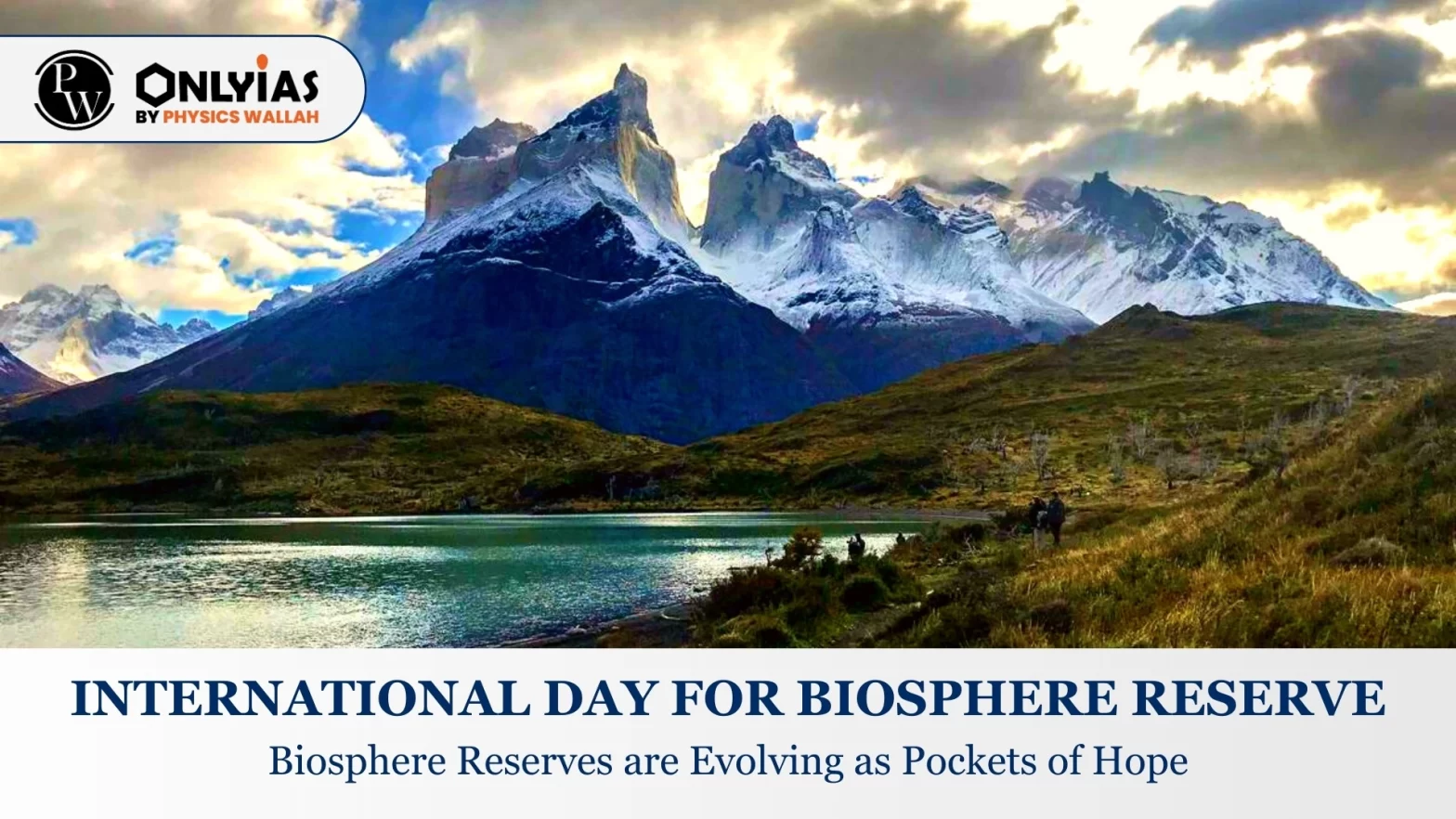Context:
- This article is based on an Editorial “Biosphere reserves are evolving as pockets of hope” which was published in the Hindu. International Day for Biosphere Reserve is celebrated on November 3 each year to raise awareness of the importance of biosphere reserves and to promote their conservation and sustainable use.
- On the second anniversary, it is important to reflect on the progress made in conserving and sustainably using these vital ecosystems.
| Relevancy for Prelims: International Day for Biosphere Reserve, and Biosphere Reserves.
Relevancy for Mains: Biosphere Reserve, its significance, associated challenges and associated initiatives. |
How many biosphere reserves are there in the world?
- According to UNESCO, there are currently 748 biosphere reserves across 134 countries, including 22 transboundary sites.
| UNESCO in partnership with the Ministry of Environment, Forests and Climate Change and the National Centre for Sustainable Coastal Management, concluded the 10th South and Central Asian Biosphere Reserve Network Meeting (SACAM) in Chennai. |
What are the three levels of biosphere reserves?
- Core Zone: Strictly protected zone, providing habitat for flora and fauna, and protecting water, soil, air, and biota as a whole ecosystem.
- Buffer Zone: Surrounding the core zone, where people live and work in harmony with nature and functions as a laboratory for scientists to study nature, and for training and education.
- Transition Zone: The outermost zone, the place where communities practice socio-culturally and ecologically sustainable human activities.
Significance of Biosphere Reserves
- UNESCO: United Nations Educational, Scientific and Cultural Organisation (UNESCO) biosphere reserves are living jewels of land, coastal and marine ecosystems, scattered across the globe, where nature and humans come together creating a symphony of life.
- UN: These are also supported by other United Nations (UN) agencies, like the United Nations Development Programme, the United Nations Environment Programme, as well as the International Union for Conservation of Nature.
- Vital Reserves: Biosphere Reserves are important in preserving ecosystems, fighting against climate change (world’s carbon sinks helping to absorb carbon dioxide from the atmosphere) , protection of biodiversity, ensuring the sustainable use of natural resources, and providing opportunities for sustainable economic development.
The UNESCO Man and the Biosphere (MAB) programme
- It enhances the human-environment relationship through combining natural and social sciences to improve livelihoods, safeguard ecosystems, and promote sustainable economic development.
|
Conservation Efforts at Local Level
- Sundarban Biosphere Reserve: Here local communities are working together to manage mangrove forests and protect the biodiversity of the region.
- Gulf of Mannar Biosphere Reserve: Here local communities, including women, are contributing towards conservation efforts by forming self-help groups, while the youth are getting engaged in eco-tourism.The Gulf of Mannar Biosphere Reserve Trust employs ‘plastic checkpoints’ to collect and recycle waste for road construction.
What are the challenges faced by Biosphere Reserves?
- Threats such as deforestation, invasive species and land use changes such as mining.
- Increasing Urbanization
- Constant growth of the world population
- Exploitation by humans is ever increasing
Know All about Biosphere Reserves in India in 2023
Conclusion:
To achieve the best of the potential , there is a need for dedicated and inclusive contribution towards the South and Central Asian Biosphere Reserve Network Meeting (SACAM) that provides a platform for exchanging knowledge and fostering collaborations in the realm of sustainable environmental practices in the South and Central Asia Region.
| Prelims Question (2017)
From the ecological point of view, which one of the following assumes importance in being a good link between the Eastern Ghats and the Western Ghats?
(a) Sathyamangalam Tiger Reserve
(b) Nallamala Forest
(c) Nagarhole National Park
(d) Seshachala
Ans: (a) |
![]() 3 Nov 2023
3 Nov 2023

